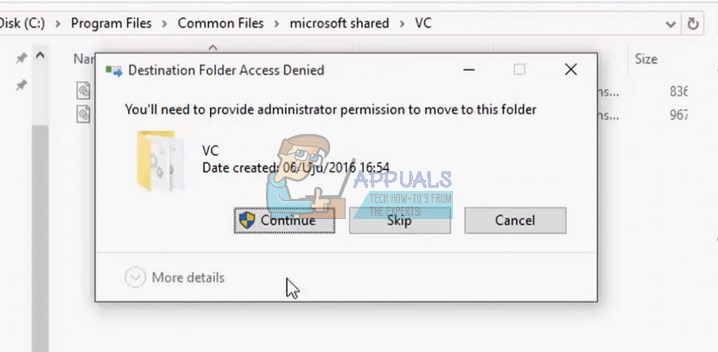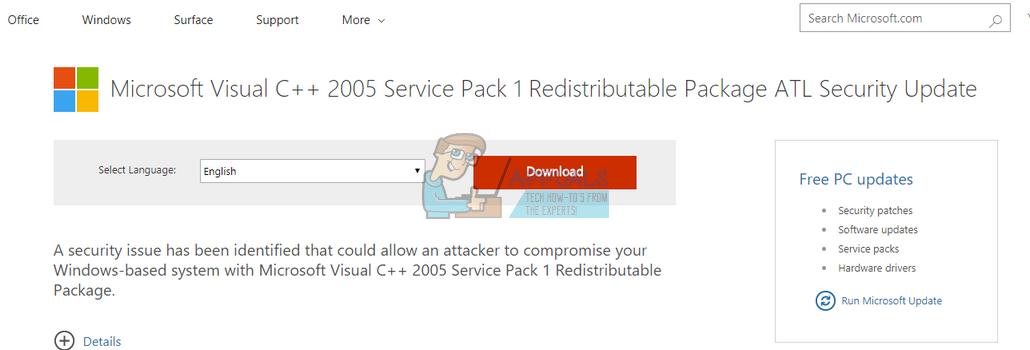What is msdia80.dll and should you Delete it?
The msdia80.dll is a system file in Visual C++ and other Windows-based software applications. Microsoft Visual C++ is a commercial, integrated development environment (IDE) for C, C++, and CLI programming languages. It has tools for running and debugging various C++ code including the code for Microsoft Windows API, DirectX API, and Microsoft .NET Framework.
The full form of DLL is Dynamic Link Library. It is a package which contains important code or libraries for programs to reference and use. It is usually a read-only file which means many applications can simultaneously access the file without any problems. There are many applications which depend on several DLL files for their smooth operation. If you delete such a DLL, the application might not run as expected.
What is msdia80.dll and how did it get in my Root Directory?
The DLL msdia80.dll is present on your drive because you installed Microsoft Redistributable Package on your computer. If it is present on your D drive (any other drive except your system drive (C) ), it means that there are some games or application in D who installed the package on your computer. The original location for the DLL file is not supposed to be in the root directory; instead, it should be alongside all the other DLL files. The correct path is ‘C:\Program Files (x86)\Common Files\microsoft shared\VC’.
Particularly, msdia80.dll is installed on the root folder of the boot drive when you install the Visual C++ 2005 Redistributable package using the exe files ‘Vcredist_x64.exe’ or ‘Vcredist_ia64.exe’.
What should you do about the DLL file? Delete it?
Like we explained earlier, it is against our recommendation that you delete any DLL file on your computer. They are just pieces of code present on your computer which are accessible to applications when the need arises. If ‘msdia80.dll’ is present in all of your drives, move it to the correct location and register it. Do note that registering the file is important as you are letting Windows know that you have placed the required file in that target location and it can access it whenever it wants. Either you can do this or you can install two Microsoft packages on your computer. We will iterate through both the methods.
Solution 1: Relocating the DLL file
We will relocate the DLL file from the root directory of the drive and place it inside the VC folder present in your boot drive (boot drive is a drive where your operating system is installed).
- Press Windows + E to launch the File Explorer and navigate to the drive where msdia80.dll is present in the root directory.
- Right-click on the DLL file and select “Cut”.

- Now navigate to the following file path:
C:\Program Files (x86)\Common Files\microsoft shared\VC

You can change the local drive in path name if your operating system is saved on another drive.
- Right-click on any empty space and click “Paste”. A UAC may pop-up asking you to authorize the transfer. Press “Continue”.

- Once the relocation is complete, we need to register the file. Press Windows + S, type “command prompt” in the dialogue box, right-click on the application and select “Run as administrator”.
- Once in elevated command prompt, execute the following the command. Make sure you include the double-quotes.
regsvr32 “C:\Program Files (x86)\Common Files\microsoft shared\VC\msdia80.dll”

- Restart your computer and check if our problem got fixed.
Solution 2: Installing Microsoft Visual C++ Packages
If the first solution proves to be tedious or doesn’t work as expected, we can try installing Microsoft Visual C++ Packages on your computer. There are two packages we will install. Make sure you have administrative privileges and an internet connection to carry out this solution.
- Open your browser and navigate to the package “Microsoft Visual C++ 2005 Service Pack 1 Redistributable Package ATL Security Update”.

- Select ‘vcredist_x86.exe’ and ‘vcredist_x64.exe’ from the checklist and download them to an accessible location. After downloading, run these executables and wait for them to be installed. Make sure to launch them in elevated mode (right-click and select “Run as administrator”).

- After installing these two packages, navigate to the package “Microsoft Visual C++ 2005 Service Pack 1 Redistributable Package MFC Security Update”.

- Select ‘vcredist_x86.EXE’ and ‘vcredist_x64.EXE’ from the checklist and download them to an accessible location. After downloading, run these executables and wait for them to be installed. Make sure to launch them in elevated mode (right-click and select “Run as administrator”).

- After installing all the packages, restart your computer and check if the problem got solved.
Note: If the problem isn’t solved after following both solutions, don’t worry and just leave the DLL in your root directory. Like we explained earlier, DLL files are just files for reference and if one is present in your directory, there is no harm done. Continue operating your machine you will not be affected in any way.